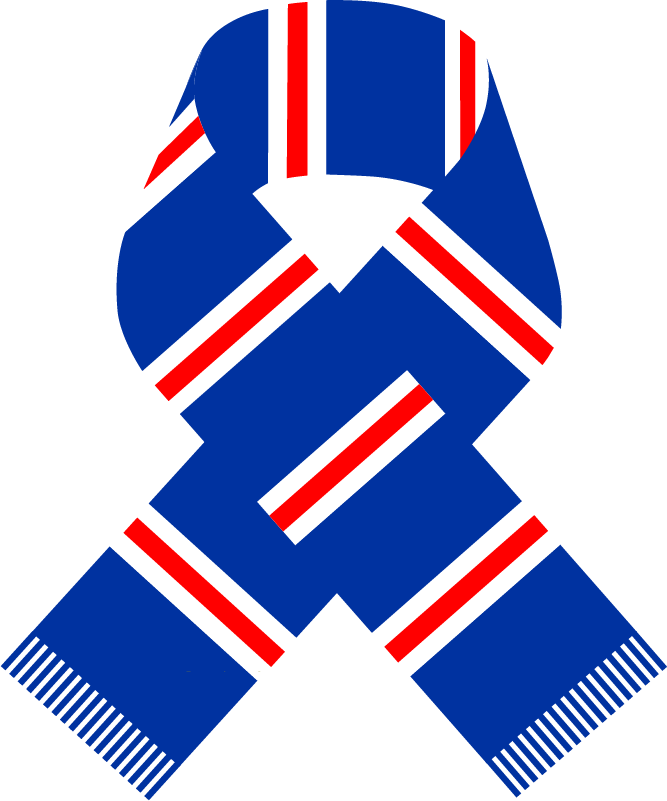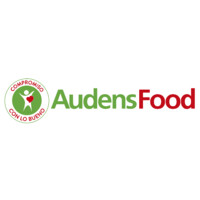Title Page
-
Conducted on
-
Prepared by
-
Location
Continuous Improvement: Document to be used for development purposes and will be scheduled as part of the ICC quality assurance review. This management review approach allows for simple improvements to be gathered and scored internally for ongoing internal review.
1 Processes and Systems
-
1. Responsibilities, Standards and systems are clearly defined for developing, implementing, monitoring, and reviewing the key service delivery elements.
- No. Needs Improvement.
- Yes. In place needs time to mature.
- Yes. In place and developing well.
- Yes. Developing in line with Industry Best Practice
-
2. Internal Inspections are consistent, appropriate to the activity and carried out by trained Staff.
- No. Needs Improvement.
- Yes. In place needs time to mature.
- Yes. In place and developing well.
- Yes. Developing in line with Industry Best Practice
2 Cleaning and Housekeeping
-
1. The standard of cleanliness of the facilities is visibly acceptable.
- No. Needs Improvement.
- Yes. In place needs time to mature.
- Yes. In place and developing well.
- Yes. Developing in line with Industry Best Practice
-
2. Cleaning and Housekeeping is carried out taking due consideration of Staff and customer safety.
- No. Needs Improvement.
- Yes. In place needs time to mature.
- Yes. In place and developing well.
- Yes. Developing in line with Industry Best Practice
3 Maintenance
-
1. A comprehensive condition survey of Building, Plant and Equipment has been regularly completed.
- No. Needs Improvement.
- Yes. In place needs time to mature.
- Yes. In place and developing well.
- Yes. Developing in line with Industry Best Practice
-
2. An Asset Management Plan has been developed to determine the long-term upkeep requirements of the Centre.
- No. Needs Improvement.
- Yes. In place needs time to mature.
- Yes. In place and developing well.
- Yes. Developing in line with Industry Best Practice
-
3. A programme of planned preventative maintenance is implemented to assure the service sustainability and stakeholder satisfaction.
- No. Needs Improvement.
- Yes. In place needs time to mature.
- Yes. In place and developing well.
- Yes. Developing in line with Industry Best Practice
-
4. An effective defect reporting system is used to minimise service interruption.
- No. Needs Improvement.
- Yes. In place needs time to mature.
- Yes. In place and developing well.
- Yes. Developing in line with Industry Best Practice
-
5. Responsibilities for maintenance of all buildings, plant and equipment are clearly allocated.
- No. Needs Improvement.
- Yes. In place needs time to mature.
- Yes. In place and developing well.
- Yes. Developing in line with Industry Best Practice
-
6. Qualified, trained, and competent personnel carry out maintenance work.
- No. Needs Improvement.
- Yes. In place needs time to mature.
- Yes. In place and developing well.
- Yes. Developing in line with Industry Best Practice
-
7. Plant and Equipment operates efficiently and effectively.
- No. Needs Improvement.
- Yes. In place needs time to mature.
- Yes. In place and developing well.
- Yes. Developing in line with Industry Best Practice
4 Equipment
-
1. Equipment is stored, set-up/down and used safely.
- No. Needs Improvement.
- Yes. In place needs time to mature.
- Yes. In place and developing well.
- Yes. Developing in line with Industry Best Practice
-
2. Equipment is maintained in a satisfactory condition and replaced as necessary.
- No. Needs Improvement.
- Yes. In place needs time to mature.
- Yes. In place and developing well.
- Yes. Developing in line with Industry Best Practice
-
3. Customers are instructed in the use of relevant equipment, with records retained. THIS SECTION COULD BE REVIEWED
- No. Needs Improvement.
- Yes. In place needs time to mature.
- Yes. In place and developing well.
- Yes. Developing in line with Industry Best Practice
5 Environmental
-
1. There is a comprehensive Environmental Policy which links with the business objectives.
- No. Needs Improvement.
- Yes. In place needs time to mature.
- Yes. In place and developing well.
- Yes. Developing in line with Industry Best Practice
-
2. There is a clear Energy Management Plan for the effective and efficient use of utilities.
- No. Needs Improvement.
- Yes. In place needs time to mature.
- Yes. In place and developing well.
- Yes. Developing in line with Industry Best Practice
-
3. Standards for environmental operating conditions are defined.
- No. Needs Improvement.
- Yes. In place needs time to mature.
- Yes. In place and developing well.
- Yes. Developing in line with Industry Best Practice
-
4. Processes, procedures, and instructions are in place for the monitoring, adjustment and management of environmental conditions
- No. Needs Improvement.
- Yes. In place needs time to mature.
- Yes. In place and developing well.
- Yes. Developing in line with Industry Best Practice
-
5. Examples of environmental and energy management have been implemented and monitored for effectiveness and efficiency.
- No. Needs Improvement.
- Yes. In place needs time to mature.
- Yes. In place and developing well.
- Yes. Developing in line with Industry Best Practice
6 Changing Rooms and Toilets
-
1. Hygiene and cleanliness are maintained throughout all levels of use.
- No. Needs Improvement.
- Yes. In place needs time to mature.
- Yes. In place and developing well.
- Yes. Developing in line with Industry Best Practice
-
2. The Changing Rooms provide adequate privacy and capacity.
- No. Needs Improvement.
- Yes. In place needs time to mature.
- Yes. In place and developing well.
- Yes. Developing in line with Industry Best Practice
-
3. Sufficient and adequate clothes and valuable storage systems are provided.
- No. Needs Improvement.
- Yes. In place needs time to mature.
- Yes. In place and developing well.
- Yes. Developing in line with Industry Best Practice
-
4. Appropriate changing, toilet and washing facilities are provided and controlled for young people. ADDED THIS SECTION BACK IN
- No. Needs Improvement.
- Yes. In place needs time to mature.
- Yes. In place and developing well.
- Yes. Developing in line with Industry Best Practice
-
5. Appropriate changing, toilet and washing facilities are provided and controlled for people with a disability. ADDED THIS SECTION BACK IN
- No. Needs Improvement.
- Yes. In place needs time to mature.
- Yes. In place and developing well.
- Yes. Developing in line with Industry Best Practice
-
6. Ancillary facilities are provided and in good working order. ADDED THIS SECTION BACK IN
- No. Needs Improvement.
- Yes. In place needs time to mature.
- Yes. In place and developing well.
- Yes. Developing in line with Industry Best Practice
7. Health and Safety
-
1. The Centre has a documented safety policy and a planned approach to Health and Safety management.
- No. Needs Improvement.
- Yes. In place needs time to mature.
- Yes. In place and developing well.
- Yes. Developing in line with Industry Best Practice
-
2. Responsibilities for Health and Safety are defined, including the competent person(s) for managing the Health and Safety programme.
- No. Needs Improvement.
- Yes. In place needs time to mature.
- Yes. In place and developing well.
- Yes. Developing in line with Industry Best Practice
-
3. Staff are trained to carry out Health and Safety responsibilities and safe working practices.
- No. Needs Improvement.
- Yes. In place needs time to mature.
- Yes. In place and developing well.
- Yes. Developing in line with Industry Best Practice
-
4. Formal risk assessments have been carried out and are regularly reviewed. ADDED THIS SECTION BACK
- No. Needs Improvement.
- Yes. In place needs time to mature.
- Yes. In place and developing well.
- Yes. Developing in line with Industry Best Practice
-
5. A risk reduction plan is implemented.
- No. Needs Improvement.
- Yes. In place needs time to mature.
- Yes. In place and developing well.
- Yes. Developing in line with Industry Best Practice
-
6. Formal COSHH assessments have been carried out and are regularly reviewed.
- No. Needs Improvement.
- Yes. In place needs time to mature.
- Yes. In place and developing well.
- Yes. Developing in line with Industry Best Practice
-
7. Systems are in place for the safe handling and storage of chemicals including provision and use of PPE.
- No. Needs Improvement.
- Yes. In place needs time to mature.
- Yes. In place and developing well.
- Yes. Developing in line with Industry Best Practice
-
8. Staff follow documented safe working practices and work safely.
- No. Needs Improvement.
- Yes. In place needs time to mature.
- Yes. In place and developing well.
- Yes. Developing in line with Industry Best Practice
-
9. Accident and emergency procedures are documented, in place and tested.
- No. Needs Improvement.
- Yes. In place needs time to mature.
- Yes. In place and developing well.
- Yes. Developing in line with Industry Best Practice
-
10. Sub-contractors working on site are controlled.
- No. Needs Improvement.
- Yes. In place needs time to mature.
- Yes. In place and developing well.
- Yes. Developing in line with Industry Best Practice
-
11. Independent audits are conducted.
- No. Needs Improvement.
- Yes. In place needs time to mature.
- Yes. In place and developing well.
- Yes. Developing in line with Industry Best Practice
-
12. Management are regularly updated on new requirements / developments in Health and Safety.
- No. Needs Improvement.
- Yes. In place needs time to mature.
- Yes. In place and developing well.
- Yes. Developing in line with Industry Best Practice
-
13. Safety performance information is reviewed and acted upon by Management.
- No. Needs Improvement.
- Yes. In place needs time to mature.
- Yes. In place and developing well.
- Yes. Developing in line with Industry Best Practice
-
14. Statutory/ACOP/Industry Guideline certifications, examinations and inspections are followed and up to date.
- No. Needs Improvement.
- Yes. In place needs time to mature.
- Yes. In place and developing well.
- Yes. Developing in line with Industry Best Practice
8. Customer Service
-
1. A positive approach to customer care is clearly planned and effective.
- No. Needs Improvement.
- Yes. In place needs time to mature.
- Yes. In place and developing well.
- Yes. Developing in line with Industry Best Practice
-
2. All groups of customers have equal access and opportunities to enjoy use of the facilities.
- No. Needs Improvement.
- Yes. In place needs time to mature.
- Yes. In place and developing well.
- Yes. Developing in line with Industry Best Practice
-
3. Staff are generally helpful and pleasant and respond positively to enquiries and sales opportunities.
- No. Needs Improvement.
- Yes. In place needs time to mature.
- Yes. In place and developing well.
- Yes. Developing in line with Industry Best Practice
-
4. Lost and found property is effectively controlled and managed.
- No. Needs Improvement.
- Yes. In place needs time to mature.
- Yes. In place and developing well.
- Yes. Developing in line with Industry Best Practice
9. Staff and Coaches
-
1. All Staff and individuals involved in service delivery are suitably qualified, trained and competent to perform their duties.
- No. Needs Improvement.
- Yes. In place needs time to mature.
- Yes. In place and developing well.
- Yes. Developing in line with Industry Best Practice
-
2. Recruitment and training are implemented in accordance with legal requirements.
- No. Needs Improvement.
- Yes. In place needs time to mature.
- Yes. In place and developing well.
- Yes. Developing in line with Industry Best Practice
-
3. The recruitment process is fair, thorough and ensures the right appointment.
- No. Needs Improvement.
- Yes. In place needs time to mature.
- Yes. In place and developing well.
- Yes. Developing in line with Industry Best Practice
-
4. There are policies, which ensure appropriate screening of all individuals working with young children and/or vulnerable customers.
- No. Needs Improvement.
- Yes. In place needs time to mature.
- Yes. In place and developing well.
- Yes. Developing in line with Industry Best Practice
-
5. Appropriate induction procedures are designed and followed.
- No. Needs Improvement.
- Yes. In place needs time to mature.
- Yes. In place and developing well.
- Yes. Developing in line with Industry Best Practice
-
6. A Staff performance review and development scheme is implemented on at least an annual basis.
- No. Needs Improvement.
- Yes. In place needs time to mature.
- Yes. In place and developing well.
- Yes. Developing in line with Industry Best Practice
-
7. Training and development needs are identified regularly and are appropriate to the individual’s role and the organisation’s objectives.
- No. Needs Improvement.
- Yes. In place needs time to mature.
- Yes. In place and developing well.
- Yes. Developing in line with Industry Best Practice
-
8. The training and development programme is structured to enable and encourage Staff to achieve further work-related qualifications and provide sound succession planning.
- No. Needs Improvement.
- Yes. In place needs time to mature.
- Yes. In place and developing well.
- Yes. Developing in line with Industry Best Practice
-
9. A culture of continuous improvement exists through Staff involvement in the ICC development and implementation.
- No. Needs Improvement.
- Yes. In place needs time to mature.
- Yes. In place and developing well.
- Yes. Developing in line with Industry Best Practice
-
10. Staff are valued, rewarded, and recognised for their contribution.
- No. Needs Improvement.
- Yes. In place needs time to mature.
- Yes. In place and developing well.
- Yes. Developing in line with Industry Best Practice
10. Business Management
-
1. The Centre has a current “Business Plan” with clear actions, timescales, and responsibilities for all aspects of managing the facilities.
- No. Needs Improvement.
- Yes. In place needs time to mature.
- Yes. In place and developing well.
- Yes. Developing in line with Industry Best Practice
11. Programme Development
-
1. The activity programme reflects the needs of its identified customers and is based on the Centre’s objectives, stakeholder requirements and research.
- No. Needs Improvement.
- Yes. In place needs time to mature.
- Yes. In place and developing well.
- Yes. Developing in line with Industry Best Practice
-
2. The activity programme is inclusive and pro-actively developed to cater for target or under-represented groups.
- No. Needs Improvement.
- Yes. In place needs time to mature.
- Yes. In place and developing well.
- Yes. Developing in line with Industry Best Practice
-
3. The programme is regularly reviewed.
- No. Needs Improvement.
- Yes. In place needs time to mature.
- Yes. In place and developing well.
- Yes. Developing in line with Industry Best Practice
-
4. Management develops community partnerships in order to meet Business Plan objectives and increase participation.
- No. Needs Improvement.
- Yes. In place needs time to mature.
- Yes. In place and developing well.
- Yes. Developing in line with Industry Best Practice
-
5. Management demonstrates the importance of and opportunities for community engagement.
- No. Needs Improvement.
- Yes. In place needs time to mature.
- Yes. In place and developing well.
- Yes. Developing in line with Industry Best Practice
-
6. Community engagement is planned, implemented, and reviewed.
- No. Needs Improvement.
- Yes. In place needs time to mature.
- Yes. In place and developing well.
- Yes. Developing in line with Industry Best Practice
Business Review
-
1. Relevant Performance Indicators are identified and targets set accordingly.
- No. Needs Improvement.
- Yes. In place needs time to mature.
- Yes. In place and developing well.
- Yes. Developing in line with Industry Best Practice
-
2. The Business Plan is monitored on a regular basis and includes income and expenditure on at least a monthly basis.
- No. Needs Improvement.
- Yes. In place needs time to mature.
- Yes. In place and developing well.
- Yes. Developing in line with Industry Best Practice
-
3. Periodic reviews/audit are used to develop and inform the Service Improvement Plan.
- No. Needs Improvement.
- Yes. In place needs time to mature.
- Yes. In place and developing well.
- Yes. Developing in line with Industry Best Practice
Completion
-
Additional Notes
















